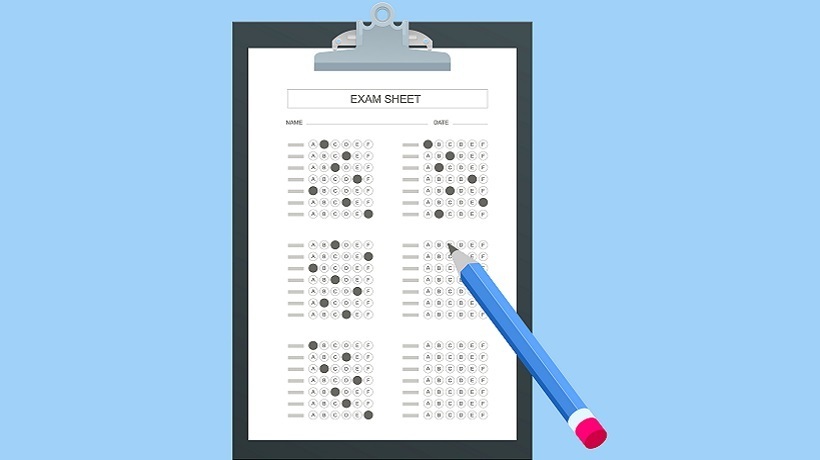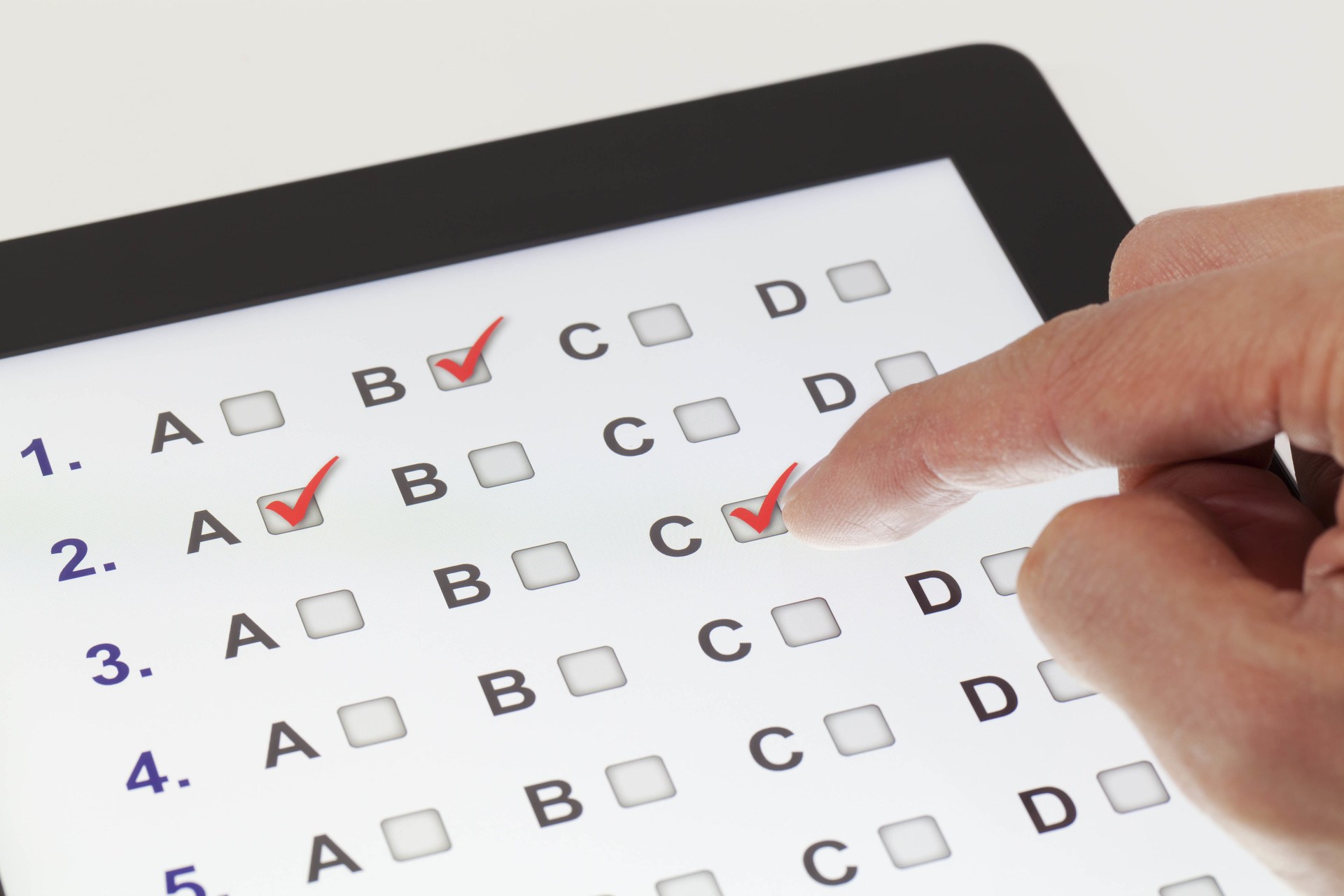Effective Alternatives To Multiple-Choice
Multiple-choice quizzes and exams have long been a common method of evaluating learning in education. The idea behind multiple-choice tests is to provide students with a series of questions, where each question has four or five options, and the student is required to choose the correct answer. Although multiple-choice exams are considered easy to create, grade, and administer, they need to accurately assess students' understanding of the material and their ability to apply it.
The Problems With Multiple-Choice Exams
One of the primary issues with multiple-choice quizzes and exams is that they encourage rote memorization of information rather than promoting deeper learning. Students can often pass multiple-choice tests with little or no understanding of the underlying concepts. They may memorize the material just long enough to pass the exam and forget it almost immediately afterward. Furthermore, multiple-choice tests have a high degree of guessing. With three, four, or five options, students can select the correct answer without fully understanding the material. The multiple-choice format makes it easy for students to guess, distorting their scores and making it difficult to evaluate their understanding of the material accurately.
Another area for improvement with multiple-choice tests is that they often focus on lower-order thinking skills rather than higher-order ones. Lower-order thinking skills involve memorizing and recalling information, while higher-order thinking skills involve analyzing, synthesizing, and evaluating information. Multiple-choice tests can assess lower-order thinking skills, such as memorization, but need to be better suited for assessing higher-order thinking skills necessary for critical thinking and problem-solving.
Multiple-Choice Alternatives To Consider
Given the limitations of multiple-choice tests, it is essential to consider alternative evaluation methods more effective in measuring learning. Some alternative evaluation methods to multiple-choice include (but are not limited to):
- Essay exams
Essay exams require students to write an answer in their own words, which can provide insight into their understanding of the material. Essay exams can also evaluate higher-order thinking skills, such as analysis and synthesis, and provide opportunities for students to demonstrate their ability to apply the material to real-world situations. - Performance-based assessments
Performance-based assessments require students to complete a task or project demonstrating their understanding of the material. These assessments can evaluate higher-order thinking skills and provide insight into how students apply the material to real-world situations. - Open-ended questions
Open-ended questions allow students to respond in their own words and provide insight into their understanding of the material. These questions can also evaluate higher-order thinking skills like analysis and synthesis. - Portfolios
Portfolios are student work collections demonstrating their understanding of the material. Portfolios can evaluate higher-order thinking skills and provide a comprehensive view of a student's understanding of the material. - Peer evaluation
Peer evaluation involves having students evaluate each other's work. This can be an effective way to promote critical thinking and can provide insight into how students understand the material. - Case studies
Case studies involve presenting students with a real-world scenario and asking them to analyze and solve a problem related to the material. Case studies can be used to evaluate higher-order thinking skills and provide opportunities for students to apply the material to real-world situations. - Oral presentations
Oral presentations require students to present their understanding of the material in front of a group. Oral presentations can evaluate higher-order thinking skills, such as analysis and synthesis, and provide opportunities for students to demonstrate their communication skills. - Group discussions
Group discussions involve having students work in small groups to discuss and analyze the material. Group discussions can evaluate higher-order thinking skills, such as analysis and synthesis, and allow students to collaborate and share their perspectives and ideas. - Oral exams
Oral exams require students to verbally answer questions about the material. Oral exams can evaluate higher-order thinking skills, such as analysis and synthesis, and provide opportunities for students to demonstrate their communication and critical thinking skills. - Concept tests
Concept tests are short, multiple-choice tests that assess students' understanding of key concepts and ideas. Concept tests can evaluate students' understanding of the material and provide opportunities to identify areas where they may need additional study or clarification. - Performance tasks
Performance tasks are assessments that require students to demonstrate their skills and understanding of the material through a real-world task or project. Performance tasks can evaluate higher-order thinking skills and allow students to apply the material to real-world situations. - Adaptive testing
Adaptive testing is a computer-based testing method that adjusts the difficulty of questions based on a student's previous answers. This can evaluate students' understanding of the material and provide a more personalized assessment experience. - Classroom observations
Classroom observations involve having an observer watch and evaluate a student's behavior and understanding of the material during class activities or discussions. These observations can be used to evaluate higher-order thinking skills and provide opportunities for students to receive personalized feedback on their learning. - Group projects
Group projects require students to work together to complete a task or project related to the material. Group projects can evaluate higher-order thinking skills, such as analysis and synthesis, and provide opportunities for students to demonstrate their collaboration and teamwork skills. - Written reflections
Written reflections involve having students write about their understanding of the material and how it relates to their personal experiences. Written reflections can be used to evaluate higher-order thinking skills, such as analysis and synthesis, and provide opportunities for students to demonstrate their ability to apply the material to their lives. - Digital media projects
Digital media projects involve using technology to create a project related to the material, such as a video, podcast, or website. Digital media projects can evaluate higher-order thinking skills, such as analysis and synthesis, and provide opportunities for students to demonstrate their creativity and technological skills. - Laboratory reports
Laboratory reports require students to conduct experiments and write reports detailing their observations, analysis, and conclusions. These reports can evaluate higher-order thinking skills, such as analysis and synthesis, and provide opportunities for students to demonstrate their understanding of scientific concepts and methods. - Authentic assessments
Authentic assessments involve creating assessments based on real-world scenarios that require students to apply their knowledge and skills to solve problems or complete tasks. Authentic assessments can evaluate higher-order thinking skills and provide opportunities for students to demonstrate their ability to apply the material to real-world situations. - Self-assessment
Self-assessments involve students evaluating their own learning and understanding of the material. Self-assessment can promote metacognition, which is the ability to think about one's own thinking, and can provide opportunities for students to reflect on their learning and identify areas for improvement. - Concept maps
Concept maps show the relationships between different concepts and ideas. These maps can evaluate students' understanding of the material and provide opportunities to demonstrate their ability to organize and connect ideas. - Peer review
Peer review involves having students review and provide feedback on each other's work. Peer review can promote critical thinking and provide opportunities for students to receive feedback on their work and improve their understanding of the material. - Classroom discussions
Classroom discussions involve having students engage in dialogue and debate about the material. These discussions can be used to evaluate higher-order thinking skills, such as analysis and synthesis, and provide opportunities for students to demonstrate their communication and critical thinking skills. - Learning journals
Learning journals involve having students write about their learning experiences, including their thoughts, feelings, and observations about the material. Learning journals can promote metacognition and provide opportunities for students to reflect on their learning and identify areas for improvement. - Simulations
Simulations involve creating virtual or real-world scenarios that allow students to practice applying the material in a safe and controlled environment. Simulations can evaluate higher-order thinking skills and allow students to apply the material to real-world situations.
The Benefits Of Using These Alternatives
It is important to note that these multiple-choice alternatives may require more time and effort to administer and grade than multiple-choice tests. However, the benefits of using alternative evaluation methods are that they can lead to a better understanding of student learning, which is ultimately the goal of higher education. Furthermore, incorporating alternative evaluation methods can promote a more diverse and inclusive learning environment. Students from diverse backgrounds and learning styles can better demonstrate their understanding of the material by using methods that do not rely solely on memorization and guessing. Incorporating alternative evaluation methods can also help address cheating and academic dishonesty issues. Multiple-choice tests can be easily copied or shared, whereas performance-based assessments and portfolios require students to create original work that reflects their understanding of the material.
Conclusion
In conclusion, multiple-choice quizzes and exams do not accurately measure learning and should not be used in higher education as the sole evaluation method. Multiple-choice alternatives for evaluation, such as essay exams, performance-based assessments, open-ended questions, portfolios, and peer evaluations, are more effective in measuring learning and promoting a deeper understanding of the material. While these methods may require more time and effort to administer and grade, they provide a more comprehensive view of a student's understanding of the material and promote a more diverse and inclusive learning environment.








